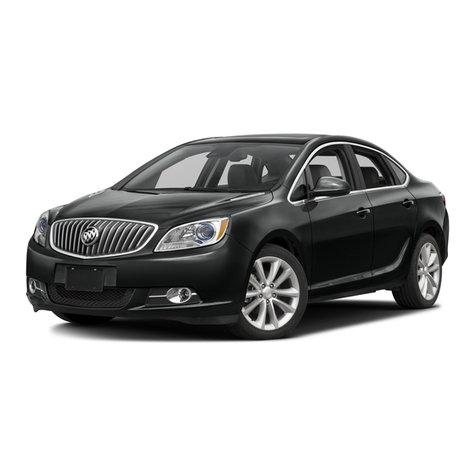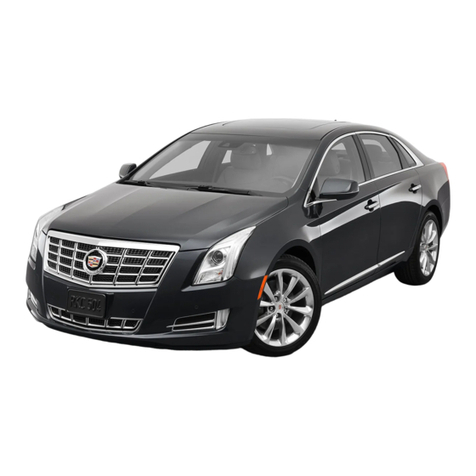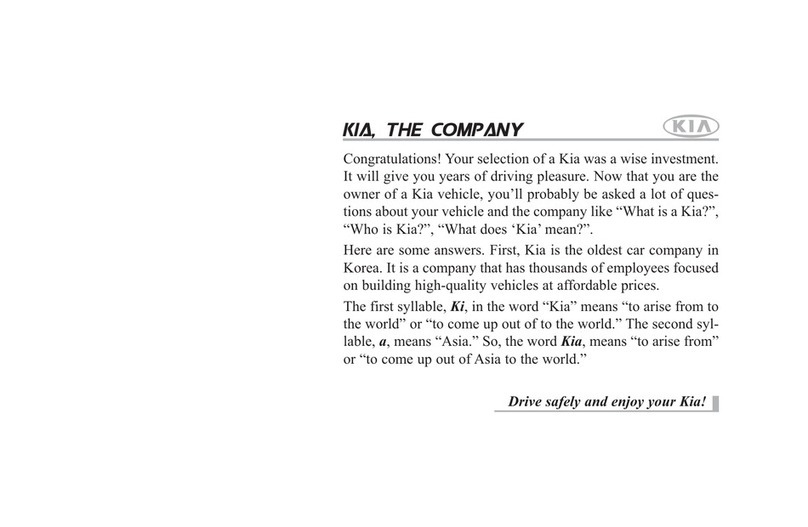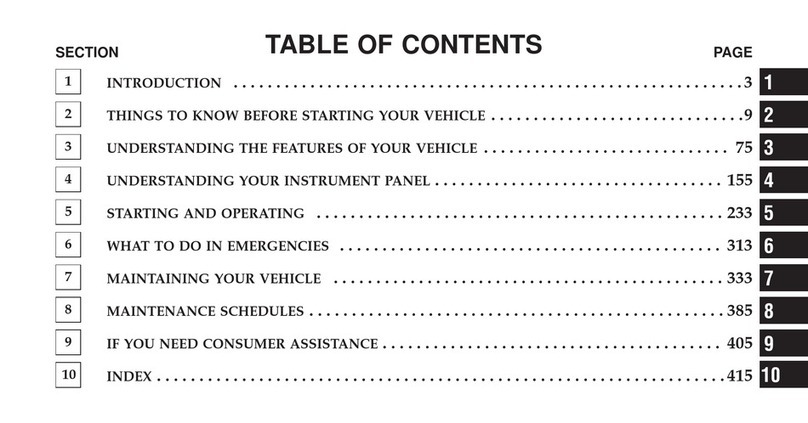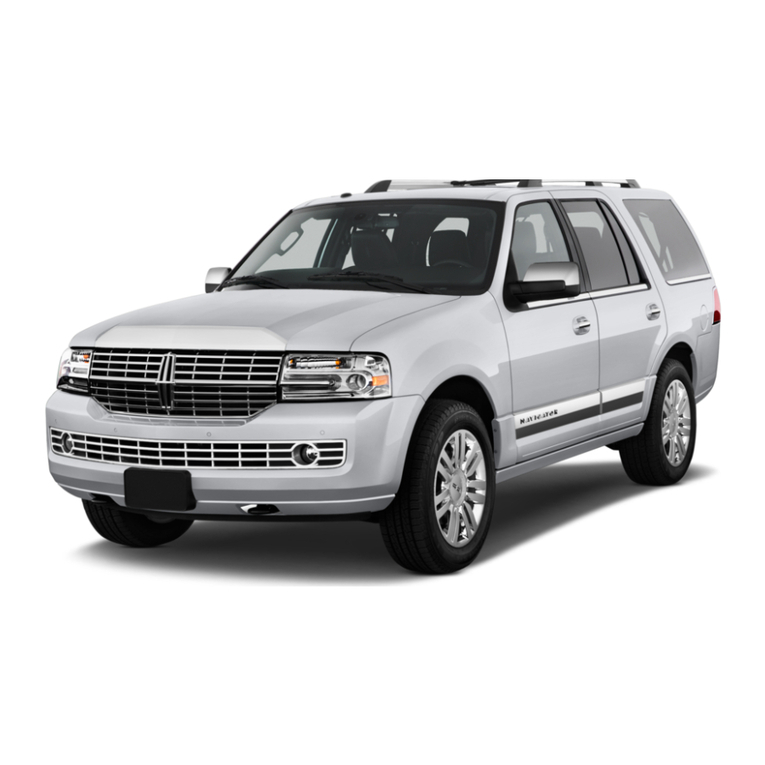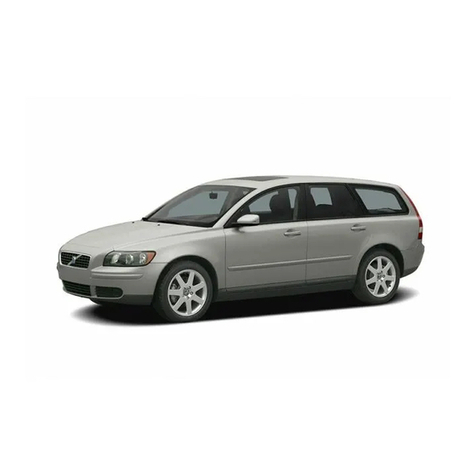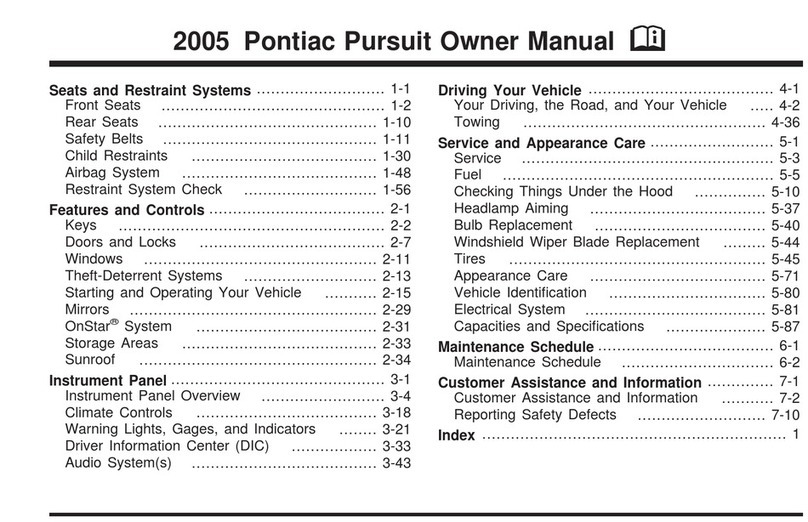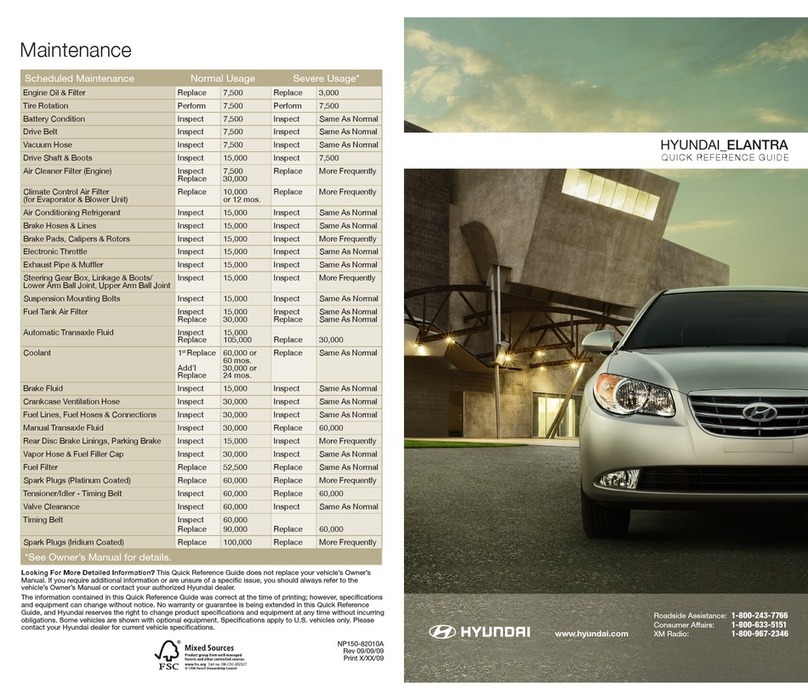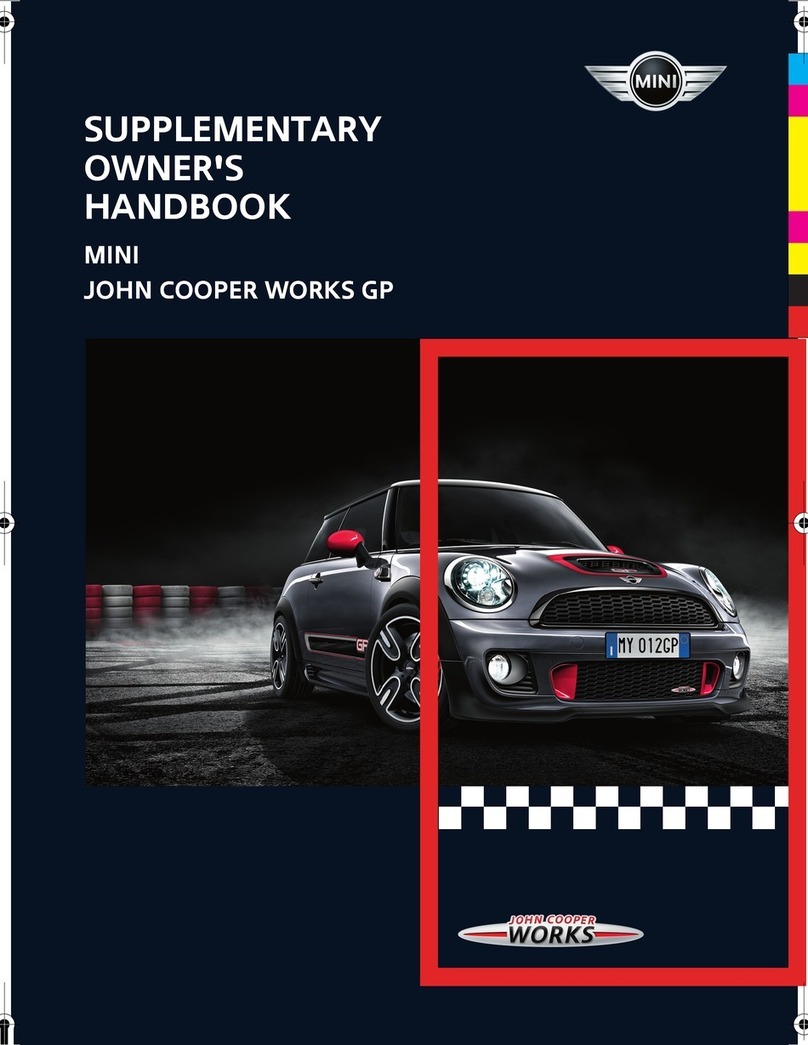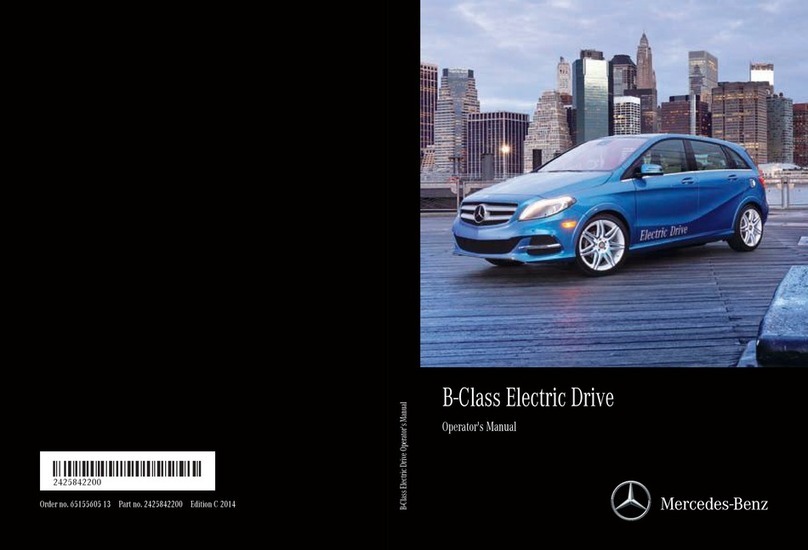STELLANTIS CHRYSLER PACIFICA HYBRID 2022 User manual

©2021 FCA US LLC 2022 Chrysler Pacifica Hybrid Emergency Response Guide page. 1
2022 CHRYSLER PACIFICA HYBRID
EMERGENCY RESPONSE GUIDE
Gasoline-Electric Hybrid Vehicle
Revision 2021-11-11-01
This brochure is a publication of FCA US LLC. All product illustrations and specifications are based upon current information at the time of publication approval. FCA
US LLC reserves the right to make changes from time to time, without notice or obligation, in prices, specifications, colors and materials, and to change or discontinue
models, which are considered necessary to the purpose of product improvement or for reason of design and/or marketing.

©2021 FCA US LLC 2022 Chrysler Pacifica Hybrid Emergency Response Guide page. 2
CcCONTENTS
marketing.
1. Identification / recognition Page 3
2. Immobilization / stabilasation / lifting Page 6
3. Disable direct hazards / safety regulations Page 8
4. Access to the occupants Page 14
5. Stored energy / liquids / gases / solids Page 18
6. In case of fire Page 22
7. In case of submersion Page 23
8. Towing / transportation / storage (2nd Responder Guidance) Page 24
9. Important additional information Page 27
10. Explanation of pictograms used Page 29

©2021 FCA US LLC 2022 Chrysler Pacifica Hybrid Emergency Response Guide page. 3
The Pacifica Hybrid can be identified by the following external indications:
A charge port door with the “e” leaf logo, which is located at the driver-side fender panel.
Unique badging on lift gate on the passenger-side rear.

©2021 FCA US LLC 2022 Chrysler Pacifica Hybrid Emergency Response Guide page. 4
The Pacifica Hybrid can be identified by the following internal indication:
The left dash gauge is a power meter.
Charge status indicator on top of the dash panel. Only illuminated when plugged in and
charging.

©2021 FCA US LLC 2022 Chrysler Pacifica Hybrid Emergency Response Guide page. 5
The Pacifica Hybrid can be identified by the following engine compartment indication:
The engine cover is unique as shown.
Chrysler Pacifica vehicles equipped with these features are hybrid-electric vehicles and utilize a
high voltage lithium-ion power source in addition to liquid fossil fuel for propulsion energy. All
practices and precautions for working with hybrid-electric vehicles should be followed when
responding to an incident involving one of these vehicles.

©2021 FCA US LLC 2022 Chrysler Pacifica Hybrid Emergency Response Guide page. 6
The Chrysler Pacifica Hybrid employs electronic shift controls. With
12-volt power active (ignition set to “RUN” or “ACC”), the
transmission can be shifted between any mode including PARK and
NEUTRAL, and the PARKING BRAKE can be engaged or disengaged.
For rescue and firefighting activities, if safe to do so, put the vehicle into PARK and
engage the PARKING BRAKE.
Shifting in and out of PARK and actuating the PARKING BRAKE
This vehicle uses an electronic shift control (1) for the automatic transmission. To shift the
vehicle to PARK, rotate the knob counter clockwise until it stops.
To place the vehicle in NEUTRAL, press on the brake, then rotate the knob clockwise from
park 2 clicks until the bar LED above “N is lit.
The Electric Parking Brake control (2) is below the shifter and is a push button type. The LED
illuminates when the PARKING BRAKE is set.
Note: 12V power must be activated to shift in and out of PARK or to change the PARKING
BRAKE state.
WARNING: In rare instances, rotation of the drive wheels may result in the
generation of high voltage electrical energy external to the high voltage battery
isolation device, and may also trigger a propulsion system response. Place in
PARK to prevent rotation if able. DO NOT PUSH.

©2021 FCA US LLC 2022 Chrysler Pacifica Hybrid Emergency Response Guide page. 7
In addition to the use of wheel chocks, if deemed appropriate by incident command, the
Chrysler Pacifica Hybrid may be lifted off its wheels to further stabilize or gain access. This
lifting should be accomplished by supporting only at the lift points along the frame rail
indicated by arrows shown below:
Determination of actual lift points must be made by incident command based on the unique
situational factors such as possible relocation of the hazards illustrated on the ensuing pages as
a result of impact events. These are only recommendations.

©2021 FCA US LLC 2022 Chrysler Pacifica Hybrid Emergency Response Guide page. 8
Chrysler Pacifica Hybrid –RESCUE SHEET

©2021 FCA US LLC 2022 Chrysler Pacifica Hybrid Emergency Response Guide page. 9
Standard procedure to disable 12 V and High Voltage (HV) power
To disable external power to the vehicle complete step 1. To disable 12 V power from the
Vehicle Systems and to disable HV Battery power external from the HV Battery complete steps
2 AND 3. Step 4 should be done if possible safely and only disables HV Battery power external
of the HV Battery. Step 5 allows the charge on HV capacitors to be discharged.
The following steps must be completed in numeric order:
1. Unplug the EVSE Recharge Coupler from the Vehicle Charge Receptacle, this will
stop the AC power transfer to the vehicle. Press the Recharge Coupler button
and pull to remove.
This removes externally supplied high voltage power from the vehicle.
2. Turn off Ignition switch by pressing stop button, this will start the process of disabling 12
Volt and HV power. Remove the key fob and relocate it at least 20 feet away from the
car.
This starts the normal shut-down of low and high voltage power.

©2021 FCA US LLC 2022 Chrysler Pacifica Hybrid Emergency Response Guide page. 10
3. Physically cut the 12 V power from the vehicle, this will disable 12 V and HV power
external of the HV battery. Under the hood, on the driver side rear, remove the PDC
(“fuse box”) cover. Cut and remove a segment of the 12 V positive supply cable.
attached near the front inner corner terminal of the PDC (“fuse box”). Protect the cut
ends of the positive cable from arcing against metal parts as the cable is live.
THIS STEP WILL DISABLE BOTH HIGH VOLTAGE POWER AND RESTRAINT SYSTEMS
WARNING: Performance of the following step (4) creates an opening in
the case of the high voltage battery. Water, such as from extinguishing,
gaining entry to the battery may result in hazardous emissions and
battery pack fire. Proceed only if appropriate.
4. (Alernatively, if not able to do step 3 to disable high voltage) or in addition to, if possible
to perform safely- Remove the Service Disconnect. The Service Disconnect cover is
between the 1st and 2nd row seats.
WARNING: This will disable HV only, it does not effect low voltage and
low voltage systems including restraint systems

©2021 FCA US LLC 2022 Chrysler Pacifica Hybrid Emergency Response Guide page. 11
5. After completing the power-down steps above, wait 5 minutes before addressing a
damaged vehicle.
This will allow the HV capacitors to discharge under most circumstances. However,
under some circumstances the HV Battery System HV Contactors may not open.
Consequently, HV may not be contained to within the HV Battery System.
Personal Protective Equipment (HV qualified Gloves, Boots and Coat) provides
protection against Live HV.
RECOMMENDED: Personal Protective Equipment must be used by First
Responders when addressing a damaged Chrysler Pacifica Hybrid.
WARNING: Even after completion of these steps, it is possible for
High Voltage to still remain accessible outside of the battery pack
in the event of damage to the current-interrupting mechanism.
Always treat High Voltage components as if they remain energized.
Completion of steps 1 through 3 above will normally isolate 12-volt electrical energy within the
low voltage battery, and high voltage energy within the high voltage battery system. Isolation
of the 12-volt energy source will disable the normal operation of restraint systems.

©2021 FCA US LLC 2022 Chrysler Pacifica Hybrid Emergency Response Guide page. 12
Inverted vehicle emergency power-down procedure- Perform if vehicle is inverted, or hood
access is blocked:
WARNING: No attempt should be made to drain electrical energy from the
high voltage battery pack in the field. This is a task that requires the
specialized training and tools available to authorized service technicians.
Contact with high voltage potentials, which is possible when attempting to
connect to a damaged battery system, can cause serious or fatal injury.

©2021 FCA US LLC 2022 Chrysler Pacifica Hybrid Emergency Response Guide page. 13
Electrical PPE must be worn, and contact with high voltage components avoided even
after performance of these steps as a damaged vehicle system can behave in
unexpected and/or undesired ways, including the continued presence of high voltage
outside of the battery pack.

©2021 FCA US LLC 2022 Chrysler Pacifica Hybrid Emergency Response Guide page. 14
Impact event emergencies can require the extrication of victims from damaged vehicles.
Determination of the need and timing to extricate must be made by incident command based
on standard response practices and procedures.
RECOMMENDED: If safe to do so, remove victims from an electrified vehicle, as risk of injury
from HV battery degradation can increase over time.
Potential HV electrical power system-related hazards to victims include:
Fire, which is sustained by heat from a damaged battery or shorted wiring
Exposure to high voltage potentials caused by damage to the isolated HV system
Carbon monoxide and hydrogen fluoride emissions from a thermally active damaged
battery, which can cause injury, blindness and death.
Potentially explosive hydrogen emissions from a thermally active damaged battery.
Unintended movement of the vehicle.
RECOMMENDED: Decisions to extricate must take into account the balance between
medical condition and hazard from the state of the vehicle.
Damage to fuel systems, hot coolant lines, all high voltage electrical components and cables,
the batteries, and potentially active restraint systems must be avoided at all times. See the
following pages for location information. (The “Do not cut” illustrations)
Engine Compartment Access:
The hood release on the Chrysler Pacifica Hybrid is located to the left of the steering wheel at
the base of the lower dash panel. Placing fingers upward behind the edge at the flush inset
lever handle, pull outward toward you. The hood will raise slightly and catch on the safety
latch. Reach under the hood to the right of center and feel for the release lever. Push lever
toward the passenger side and the latch will release.

©2021 FCA US LLC 2022 Chrysler Pacifica Hybrid Emergency Response Guide page. 15
Recommended Cut Points for Extrication:
The areas illustrated between the scissor symbols are recommended cut zones on the vehicle.
Determination of actual lift and cut points must be made by incident command based on the
unique situational factors such as possible relocation of the hazards illustrated on the
preceding pages as a result of impact events. These are only recommendations.
CAUTION: Review the “DO NOT CUT” illustrations that follow to be aware of the original
placement of components that may pose electrical, thermal, kinetic or other hazards during
extrication operations.
DO NOT CUT into any high voltage cables or components. Avoid cutting primary low voltage
electrical components as illustrated below.

©2021 FCA US LLC 2022 Chrysler Pacifica Hybrid Emergency Response Guide page. 16
DO NOT CUT into any pressurized or combustible fluid component illustrated below.
DO NOT CUT into occupant restraint components. (Fabric belts only may be cut with a knife)

©2021 FCA US LLC 2022 Chrysler Pacifica Hybrid Emergency Response Guide page. 17
Be advised that this vehicle includes select use of high-strength structural materials which may
slow cutting and extrication efforts unless addressed with appropriate tools for such materials.
High strength steel components are illustrated in blue-green.
LAMINATED GLASS is utilized in the windshield and front door.
TEMPERED GLASS is utilized in front quarter and rear quarter glass, rear door, lift gate and
sunroofs.
WARNING: Gaseous emissions from a thermally active damaged lithium-ion
battery include hydrogen, which is explosive when mixed with oxygen in the air.
WARNING: Gaseous emissions from a thermally active lithium-ion battery include
hydrogen fluoride which when combined with moisture in the human body forms
an acid that can cause burns, respiratory distress and injury, blindness and/or death.
RECOMENDED: Immediately open all doors and remove all glass to maximize ventilation.

©2021 FCA US LLC 2022 Chrysler Pacifica Hybrid Emergency Response Guide page. 18
Under most circumstances, a high voltage battery at zero percent useable charge, as shown on
the dash, still contains significant electrochemical energy. State of charge as displayed does
not indicate any lessening of electrical shock or thermal progression potential.
WARNING: Do not puncture, cut, apply heat to, drop, crush, or attempt to attach electrical
conductors to, any high voltage battery system or component, as injury or death may result.
WARNING: The specialized equipment necessary to safely discharge a high voltage battery
pack is not available in the field presently. DO NOT attempt to improvise a means of discharge,
as serious injury or death may result.
Discharging the Chrysler Pacifica Hybrid 400-volt battery below the
minimum operating voltage (which shows on the dash as a zero percent
charge) will do permanent damage to the battery and requires
bypassing safety mechanisms as well as specialized training. Therefore,
the high voltage energy should be contained exclusively to within the
battery pack in an incident response situation.
To contain high voltage energy within the battery pack, under most circumstances the
procedures outlined in this guide will be sufficient. However, in rare cases, the isolation device
internal to the battery system may have become damaged, in which case high voltage energy
may only be contained within the battery pack by means of physically disconnecting all
outputs from the battery pack, and covering those connectors. This process is not
recommended unless guidance from Stellantis personnel with knowledge relating to
disconnecting and securing the battery pack in the specific model involved is available to
responders. Contact the Stellantis battery engineering team for guidance in this regard.
WARNING: Even after completion of these steps, it is possible for High Voltage to still
remain accessible outside of the battery pack in the event of damage to the vehicle.
RECOMENDED: Personal Protective Equipment must be used by First Responders when
addressing a damaged Chrysler Pacifica Hybrid. Treat all high voltage components as if
energized at all times.
WARNING: 12 volt batteries contain sulfuric acid, which can cause burns and
blindness on contact, and which may be lethal if ingested.
12 VOLT BATTERIES also contain trapped electrical energy of a low
voltage potential. While these do not present a shock hazard, sparks
and arcs of significant energy are possible, and can ignite volatile fuel
vapors at an accident scene. To reduce risk of accidental ignition,

©2021 FCA US LLC 2022 Chrysler Pacifica Hybrid Emergency Response Guide page. 19
12V battery terminals may be stripped of all connections and covered as soon as safely
possible following primary response activities.
PRESSURIZED FLUIDS: Exist in multiple systems within the Chrysler Pacifica Hybrid. These
systems include:
Engine Cooling System and Radiator
Power Electronics Cooling System
Brake System
Power Steering System
Fuel System
RECOMMENDED: Avoid cutting into any tubing or components associated with these
systems, as fluids may be ejected under pressure, and potentially at high temperature.
WARNING: Fuel is flammable, and hydraulic oil is combustible. These liquids may stick to or
sink into clothing, acting as an accelerant if ignited.
The fuel system in the Chrysler Pacifica Hybrid is pressurized to protect against air pollution.
WARNING: The fuel system is pressurized. If the system is ruptured, gasoline vapors
will escape which have the potential to detonate if exposed to a source of ignition.
RECOMENDED: Prior to cutting 12-volt power, depressurize the fuel system
by pressing the fuel door release button located in the driver’s door map
pocket and wait 15 seconds for the door to open. It may take longer to open
in some situations, such as high ambient temperatures

©2021 FCA US LLC 2022 Chrysler Pacifica Hybrid Emergency Response Guide page. 20
RESTRAINT SYSTEMS utilized in the Chrysler Pacifica Hybrid include two distinct sets of
devices that contain “trapped energy” unless damaged or consumed. These are the seat belt
retractors, and the systems that deploy various restraints upon impact.
Seat belt retractors utilize a wound spring that maintains a constant pull on the
seat belt. Even when retracted, the spring still is under load. If damaged, it can
shatter throwing sharp metal debris.
WARNING: Do not cut into seat belt retractor mechanisms, as injury or blindness may result.
Air bag and bolster actuators are, typically one-time-use, explosive devices used
to rapidly inflate restraint devices on impact. Undeployed actuators can be
triggered electrically by impact sensors, thermally, or sometimes by interaction
with a cutting device passing into them.
Seatbelt Pretensioners employ a typically one-time-use explosive device to
properly position the occupant for airbag deployment. These are a similar
hazard to the airbag actuators, but can also propel metal components, or simply
retract an inconveniently placed belt, with the associated risk of injury.
WARNING: Do not cut, puncture, heat, crush, or strike air bag or bolster inflators, impact
sensors, or seatbelt pretensioners, as inadvertent detonation may result in injury or death.

